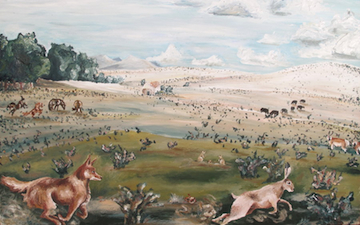Protected areas are locations which receive protection because of their environmental, cultural or similar value. A large number of kinds of protected area exist, which vary by level of protection and by the enabling laws of each country or rules of international organization. Examples include parks, reserves and wildlife sanctuaries. The term protected area includes Marine Protected Areas, which refers to protected areas whose boundaries include some area of ocean. There are over 147,000 protected areas in the world [1] with more added daily, representing a total area of 19,300,000 km2 (7,500,000 sq mi), or over 13 percent of the world’s land surface area, greater than the entire land mass of Africa.[2] By contrast, as of 2 February 2009, only 0.8 of one percent of the world’s oceans are included in the world’s ~5000 Marine Protected Areas.[3][4]
IUCN Definition:
“A clearly defined geographical space, recognised, dedicated and managed, through legal or other effective means, to achieve the long-term conservation of nature with associated ecosystem services and cultural values.”[5]


